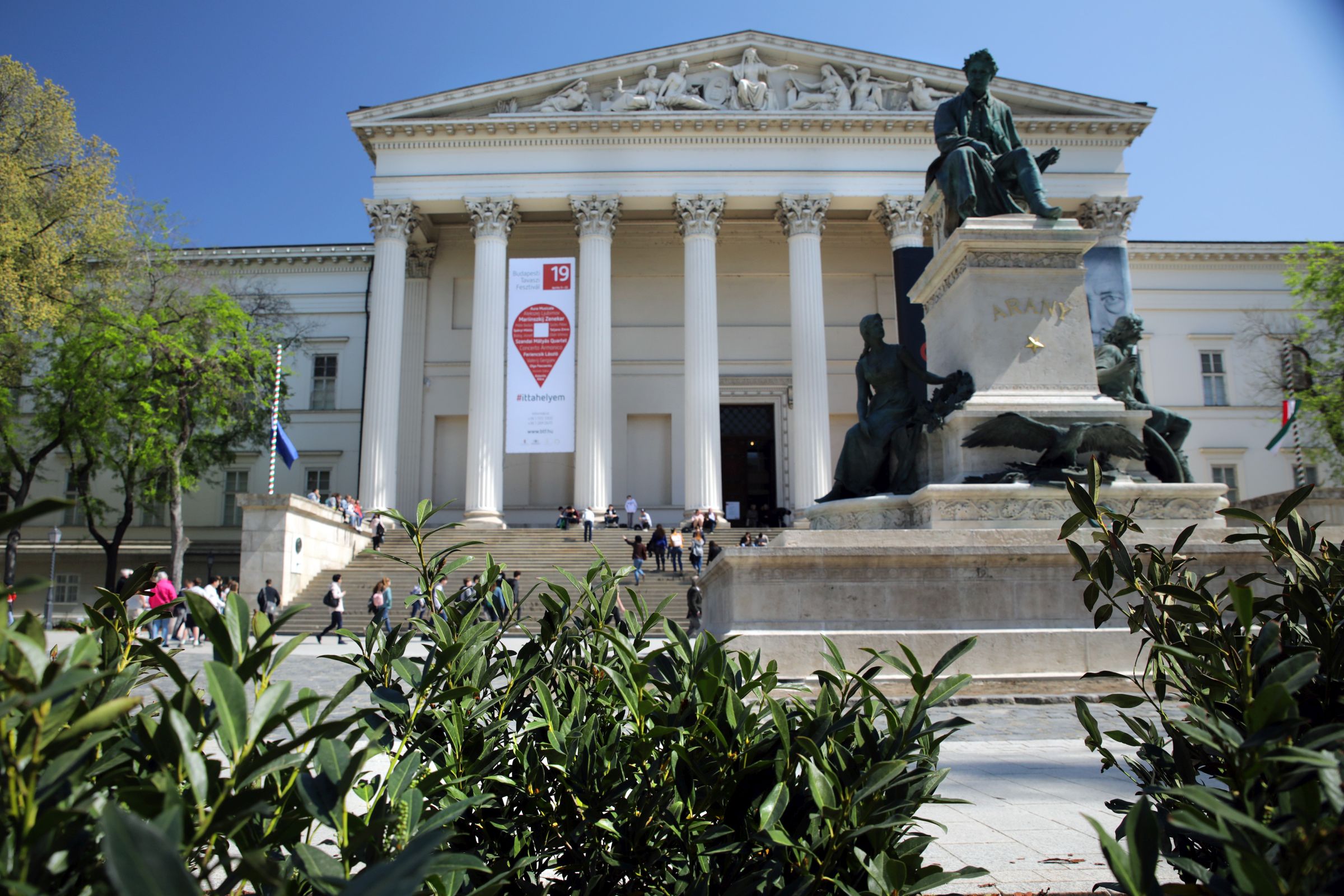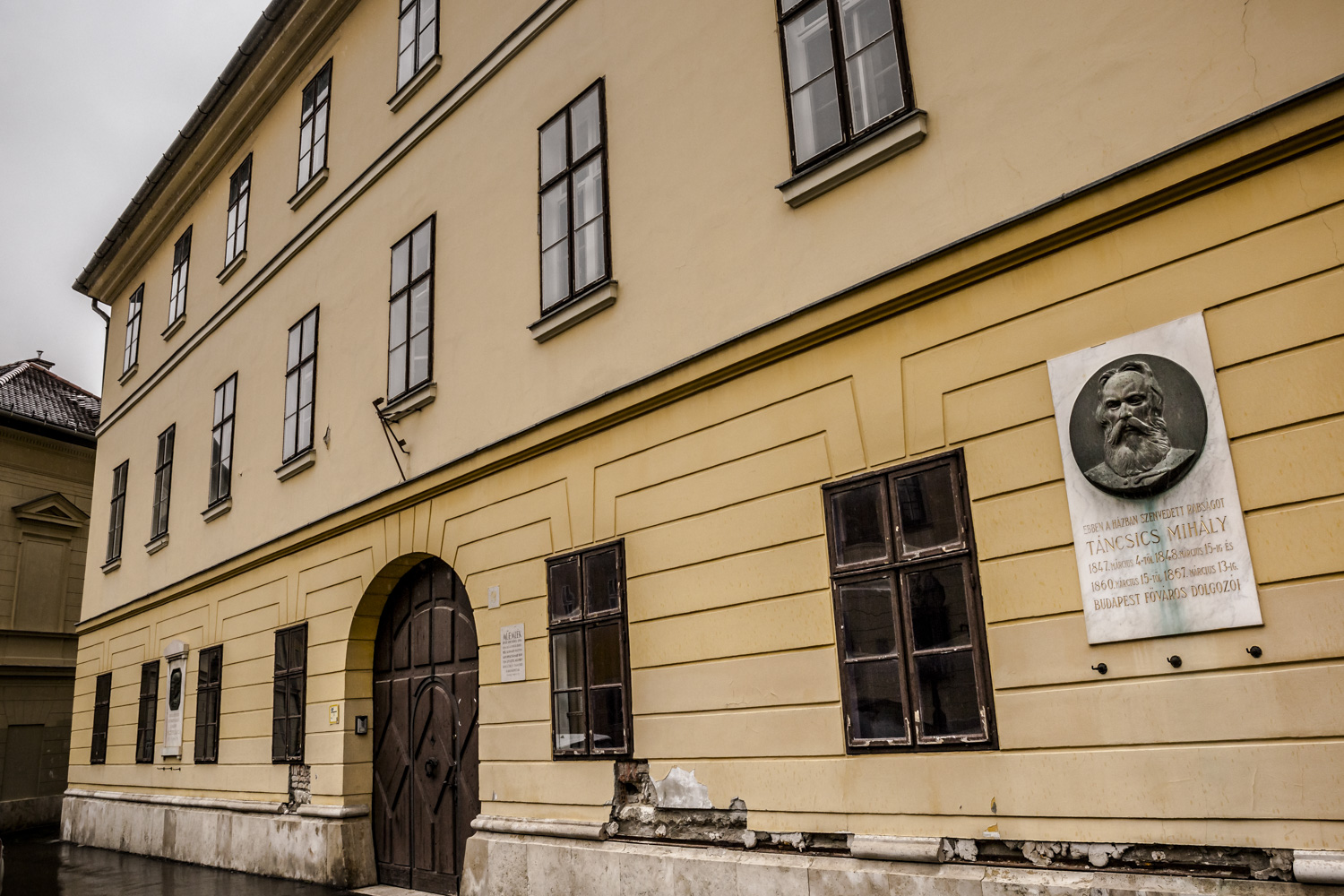
Considered as one of the main hubs of the 1848 Revolution, the Pilvax Café was the setting where the city’s zealous artists and intellectuals regularly got together to exchange opinions about life in Hungary under the Habsburg regime. This politically heated movement was soon joined by talented Hungarian poet Sándor Petőfi, who shared equally fervent views with this ardent coffeehouse crowd, and here the Magyar wordsmith first delivered his poetic masterpiece crying out for Hungarian freedom, the “National Song”. On the morning of March 15th, the dissidents gathered at the Pilvax to rally onto the streets of Budapest, spreading their outlook and loudly reciting the 12 Points, a list of demands that was previously compiled at the café. Once a scene of patriotic sentiments, today the street where the coffeehouse stood is the understated site of several international hangouts, including a Lebanese eatery, a New York-themed bar, and a Thai restaurant; only the name of the passage – Pilvax köz – is reminiscent of the history-shaking café where the 1848 Revolution began.
Address: Budapest 1052, Pilvax köz

Gathering a fast-growing crowd to join their movement, the insurgents headed from the Pilvax Café to the nearby press house – owned by the Landerer family – to print Petőfi’s “National Song” and the 12 Points, with demands including freedom of the press and the liberation of political prisoners. Lajos Landerer – who was believed to be a spy providing information to the Habsburg rulers – at first pretended that he wouldn’t fulfill the rebels’ demands, but he didn’t attempt to stop the fired-up crowds, and soon Petőfi and his fellow protesters were spreading the first printed copies of the revolutionary documents from the windows of the press house to the crowds waiting on the street. Anyone who stands in front of this classic edifice on today’s jam-packed Kossuth Lajos Street can hardly imagine what went down here 169 years ago on March 15th, as now a bustling urban scene surrounds this building housing private apartments, amid varied local and international businesses scattered around the neighborhood.
Address: Budapest 1053, Kossuth Lajos utca 3
The leaflets that were published in the Landerer printing house promoted a grand rally at the courtyard of the then-new National Museum, which turned into a key location of the uprising – here thousands of vigorous citizens allegedly gathered to await the flood of rebels. Legend has it that Petőfi ascended the monumental museum stairway to stand in front of the spirited masses, where he wholeheartedly delivered his “National Song” and inspired many people to join the protests; however, the specific details regarding Petőfi’s recital here have been obscured by history. Boasting the same architectural style as when the building first opened, today the National Museum is considered as one of the most iconic locations of the 1848 Revolution, with commemorative ceremonies happening on the building’s storied stairway on every March 15th, along with official speeches and musical reenactments of Petőfi’s dramatic recital.

Inspired by Petőfi’s high-spirited speech, the impassioned crowds headed to Pest’s City Hall that towered above today’s March 15th Square, found just a short walk away from Erzsébet Bridge. With an aim to influence the city’s leadership to join the revolution, the masses invaded the building’s council chamber seeking an endorsement of the 12 Points by having the document validated with the city’s official stamp. The rebels’ rowdy action first triggered resistance among the city officials, but finally the dissidents gained authorization on the multiple-point document. Those who are looking for the old City Hall in modern-day Budapest won’t find the two-story edifice, as the building was destroyed in 1900 when the construction of Budapest’s Erzsébet Bridge was under way. However, in observance of the 1848 events here, this plaza is now named March 15th Square, and to commemorate the poet who led the movement that day, an adjacent parkland is now named Petőfi Sándor Square, complete with a sculpture portraying Petőfi with his arm raised high as he calls for his nation to unite.
Address: Budapest 1052, Piarista utca 1

As rumors started spreading in the crowds that the Austrian military was approaching the city to trounce the uprising, some 20,000 protesters embarked to cross the river to climb up to Buda’s Castle District and rally in front of the Habsburg governing council, demanding the release of Mihály Táncsics – a Hungarian journalist and teacher – as he was imprisoned for his radical political convictions and for demanding freedom of the press. Serving as the main governmental body during this era, the council maintained full control over speech, so the demonstration in front of this Buda-side edifice was a crucial moment of March 15th as the insurgents demanded the abolition of censorship. Legend has it that just minutes after the masses started protesting on this winding Buda street, the emperor’s representatives fearfully agreed to enact the 12 Points and granted freedom to Táncsics. Today, a plaque on the building’s wall indicates that the former council house is now home to the Hungarian Academy of Sciences, which gracefully blends into the Castle District’s cobblestoned settings.
Address: Budapest 1014, Úri utca 53

After freeing Táncsics, the crowds departed for the National Theater in central Pest, which towered above today’s Astoria intersection, and – being financed by public contributions – was also a symbol of a nation that strove for independence. The dissidents barged into the theater to bring the revolution from the streets of Budapest into the building, and took to the auditorium, interrupting an ongoing play to recite the Hungarian National Anthem and other patriotic pieces. Anyone who is looking for the National Theater at present-day Astoria will find that a contemporary glass building stands in the place of the historic venue, where instead of stimulating theatrical shows the site now houses corporate offices; the original theater was demolished in 1913. Since the onset of the 21st century, a new National Theater enhances the Danube bank with its contemporary boat-shaped form, and it’s home to several prominent plays by revered Magyar writers of Hungary’s history, including Petőfi’s epic fairy tale “János Vitéz”, keeping the legacy of Hungary’s revolutionary poet alive to this day.
Address: Budapest 1088, Rákóczi út 1






